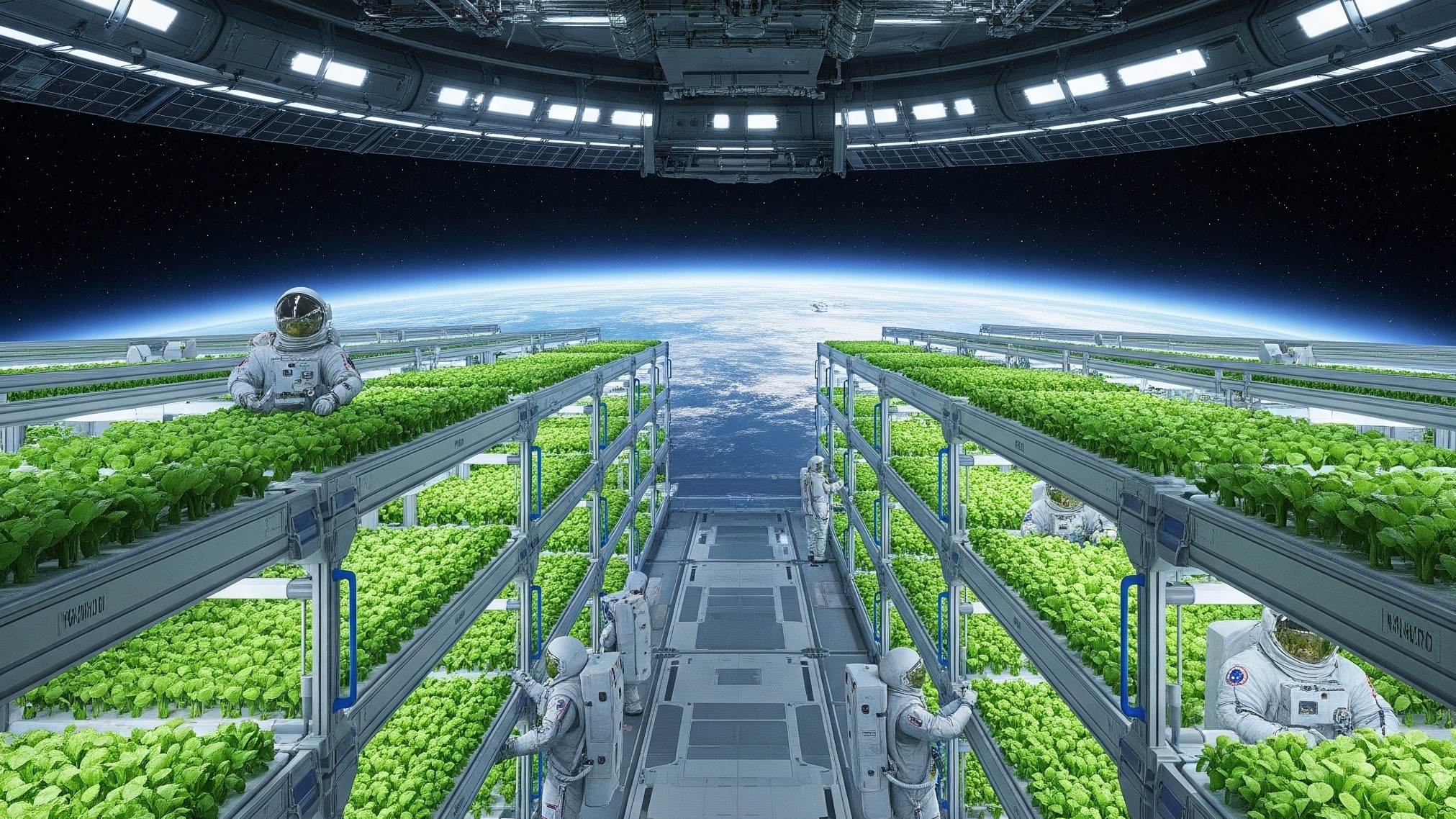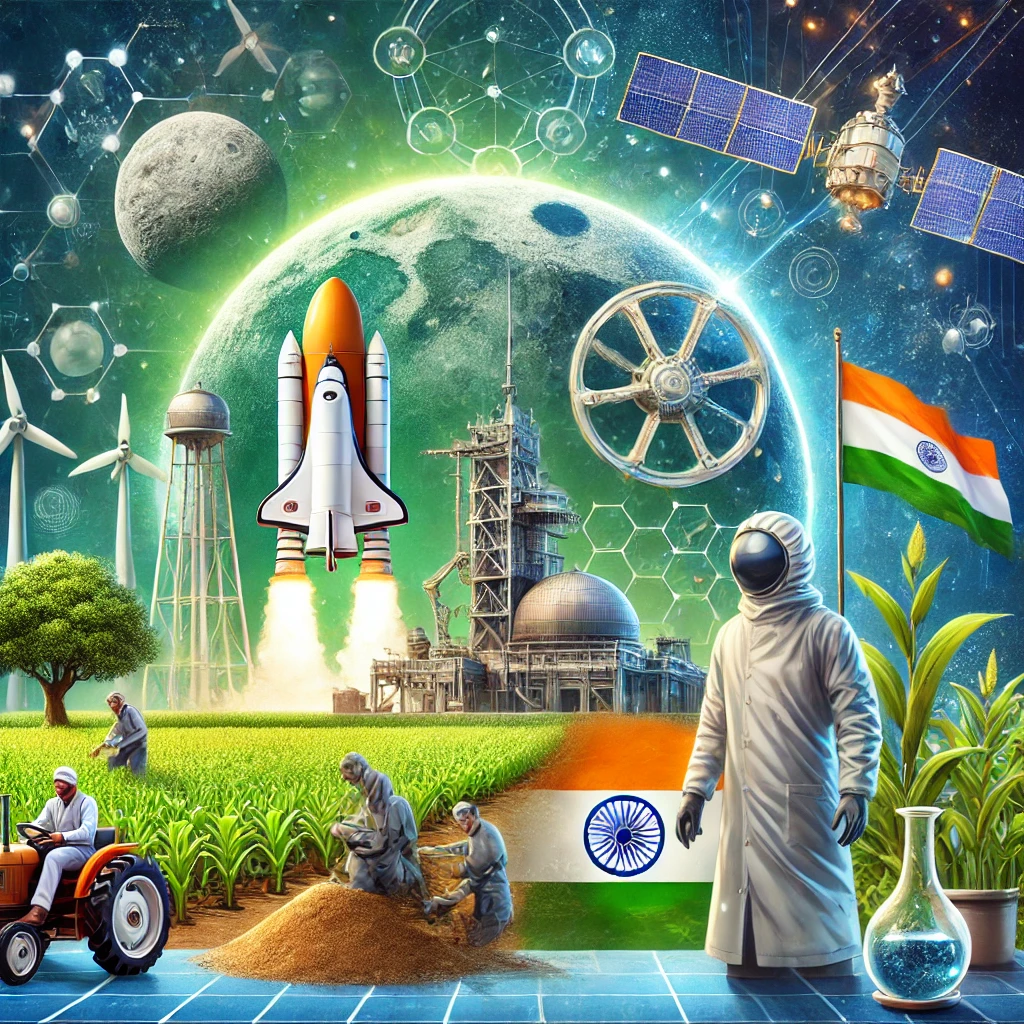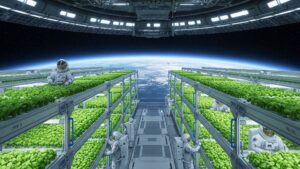Space Farming-Importance, Challenges & Future in Space
🌌 What is Space Farming? The Future of Growing Food Beyond Earth
🚀 Introduction
Imagine astronauts eating freshly grown spinach on Mars or harvesting tomatoes in a lunar greenhouse. This may sound like a scene from a sci-fi movie, but it’s already underway. Space farming—the method of growing food beyond Earth’s surface—is becoming a core part of space exploration. It’s not just about food; it’s about survival, sustainability, and even saving resources here on Earth.
🌱 What is Space Farming?
Space farming is the cultivation of plants (and potentially livestock or algae) in outer space. This can occur on the International Space Station (ISS), future Moon bases, Mars colonies, or inside spacecraft on long-duration missions.
Unlike traditional farming, space farming uses advanced technologies like hydroponics, aeroponics, artificial light systems, and recycled water loops to support plant growth in environments where gravity, sunlight, and soil are absent.
🌍 Why is Space Farming So Important?
- Self-Reliance in Space
Astronauts on Mars or the Moon cannot rely on resupply missions from Earth. Growing food onsite is the only sustainable solution. - Mental Health Benefits
Tending to plants reduces stress and anxiety for astronauts living in confined environments for months or years. - Oxygen and Air Purification
Plants absorb carbon dioxide and release oxygen, naturally improving cabin air quality. - Waste Recycling
Advanced space farms can recycle organic waste and water, creating closed-loop life support systems. - Preparing for Colonization
Space farming is essential for any future space colony. No colony can exist without food security.
🌌 Major Challenges of Space Farming
Growing food in space isn’t easy. Here are the main hurdles:
- Microgravity: Without gravity, roots and water float, making soil-based farming ineffective.
- Radiation: Cosmic rays can damage plant DNA. Shielded greenhouses or underground farms are required.
- Space Constraints: Every inch counts in space. Farming units must be small, modular, and high-yield.
- Light & Temperature: No natural sunlight in deep space means dependence on LED grow lights and thermal control.
- Pollination Issues: With no bees or wind, astronauts may need to hand-pollinate plants.
🛰️ Space Farming Success Stories
NASA and partner space agencies have conducted several successful experiments:
- Lettuce (Red Romaine) – First plant eaten in space (2015)
- Radishes – Grown in Advanced Plant Habitat (2020)
- Zinnias (Flowers) – Grew in 2016, helping study flowering in space
- Tomatoes – Part of the Veggie experiment in 2023
- Wheat & Barley – For oxygen and food production simulations
🔬 Techniques Used in Space Agriculture
- Hydroponics
Growing plants in water-based nutrient solutions, no soil required. - Aeroponics
Roots are suspended in air and misted with nutrients. Uses less water and space. - LED Grow Lights
Mimic sunlight using red, blue, and green LEDs. Adjustable for optimal growth. - Bioreactors
Used to grow algae or synthetic food proteins. - AI & Sensors
Monitor plant health, optimize light, moisture, and nutrient delivery automatically.
🌑 Farming on the Moon and Mars
Lunar Farming Plans:
- NASA and ESA are planning greenhouses on the Moon using regolith (lunar soil).
- Solar-powered grow domes will support crops like potatoes, carrots, and leafy greens.
Martian Agriculture:
- Mars has harsh conditions: low pressure, freezing temps, and toxic soil.
- However, simulated Mars soil on Earth has been used to grow over 14 types of vegetables.
- Future greenhouses may be underground to protect from radiation and use Martian ice for water.
🌾 Earth Benefits of Space Farming
You may wonder: How does this help us on Earth?
- Vertical Farming: Techniques developed for space have led to highly efficient indoor farms on Earth.
- Water Conservation: Space systems recycle 90%+ of water, helping drought-prone areas.
- Climate-Resilient Crops: Research in space helps us understand how plants survive extreme conditions.
- Smart Farming: IoT sensors, automation, and AI are improving food security globally.
🧠 Interesting Facts
- The first space-grown lettuce was eaten on the ISS by NASA astronaut Scott Kelly.
- Moss and mustard have also been tested in microgravity.
- The “Lunar Greenhouse” project uses red-blue LED lighting to grow crops efficiently with zero sunlight.
🧪 The Future: Can We Survive on Space Farming?
Absolutely! With rising interest in Mars colonization, space tourism, and even asteroid mining, space farming will evolve from a scientific experiment to a life-essential practice. Private companies like SpaceX, Blue Origin, and Bigelow Aerospace are also investing in sustainable habitat solutions—which include food systems.
✅ Conclusion
Space farming is not just about growing lettuce in orbit. It’s about growing our future. It’s the foundation of sustainable life in space and a model for more resilient agriculture here on Earth. As humanity reaches for the stars, we’ll take our gardens with us.
🔗 Internal Linking Suggestions
- World Environment Day: Earth Needs Green Solutions
- International Yoga Day: Mind-Body Balance
- Digital Fasting: Healthy Break from Screens
- Subhanshu Shukla, the first astronaut of India in ISS
Share this content:













Post Comment